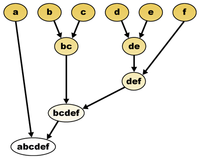Scientific classification

Scientific classification is a way scientists group things in the natural world so that they are easier to understand and study. It's like sorting your toys into different piles based on their features.
Scientists start by looking at the things they want to study, like plants or animals. They compare their physical characteristics such as their appearance, shape, and patterns. This helps them group these organisms based on their similarities and differences.
They also use specific terms for each group, like the Order, Family, Genus, and Species. Each term has its own meaning and helps to identify the characteristics of each group.
For example, let's talk about dogs. A dog belongs to the Animal Kingdom, which is the biggest group that includes all living things with a nucleus. Then they belong to the Class Mammalia, which are animals that have fur and give birth to live young, and the Order Carnivora, which are meat-eating mammals.
Next, we have the Family, which is Canidae, which includes dogs, foxes, and wolves. After that, we have the Genus which is Canis, which includes dogs, wolves, coyotes, and jackals. Finally, we have the species which is Canis lupus familiaris, which is the scientific name for domestic dogs.
So, in summary, scientific classification is a way scientists group living things based on their similarities and differences. By giving them specific names, it helps scientists better understand and study these organisms in the natural world.
Scientists start by looking at the things they want to study, like plants or animals. They compare their physical characteristics such as their appearance, shape, and patterns. This helps them group these organisms based on their similarities and differences.
They also use specific terms for each group, like the Order, Family, Genus, and Species. Each term has its own meaning and helps to identify the characteristics of each group.
For example, let's talk about dogs. A dog belongs to the Animal Kingdom, which is the biggest group that includes all living things with a nucleus. Then they belong to the Class Mammalia, which are animals that have fur and give birth to live young, and the Order Carnivora, which are meat-eating mammals.
Next, we have the Family, which is Canidae, which includes dogs, foxes, and wolves. After that, we have the Genus which is Canis, which includes dogs, wolves, coyotes, and jackals. Finally, we have the species which is Canis lupus familiaris, which is the scientific name for domestic dogs.
So, in summary, scientific classification is a way scientists group living things based on their similarities and differences. By giving them specific names, it helps scientists better understand and study these organisms in the natural world.
Related topics others have asked about:
